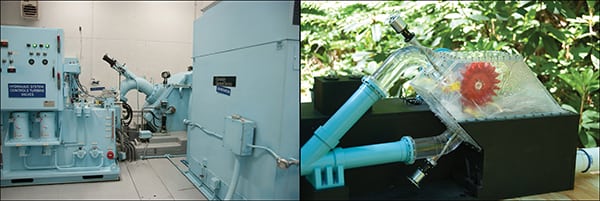OSU Develops Open-Source Tool to Assess Run-of-River Resource Potential
A new assessment tool developed by engineers at Oregon State University (OSU) could allow people, agencies, and communities interested in developing small-scale hydropower plants in remote places to easily and accurately assess whether a potential project would meet their current and future energy needs.
The free, open-source computer modeling package dubbed the Hydropower Potential Assessment Tool (HPAT) allows developers of hydro plants of less than 30 MW to assess historic and projected future hydro resource potential at single locations or over larger study regions.
HPAT implements a fully distributed streamflow model, which is coupled to a digital elevation model to assess hydropower resource potential. All inputs to HPAT are globally available, except for streamflow observations necessary for calibration.
According to Kendra Sharp, the Richard and Gretchen Evans professor in humanitarian engineering at the OSU College of Engineering, the tool could have a “special value” for engineers or policy makers contemplating small hydro in some remote, mountainous regions, where electricity is often scarce or unavailable. “The strength of this system is that it will be simple for people to use, and it’s pretty accurate even though it can work with limited data on the ground,” she said.
Sharp and OSU Associate Professor of Coastal and Ocean Engineering David Hill collaborated with Thomas Mosier, who developed the software program as a graduate student at OSU. The new technology was then field-tested at a 5-MW small-scale hydro plant built in the early 1980s on Falls Creek in the Cascade Range (Figure 5).
That demonstration’s findings were published in the November 2016 issue of the journal Renewable Energy. Notably, the researchers found at the Falls Creek facility that the timing of peak streamflow will shift from spring to winter owing to climate change. They also found that mean annual hydropower potential will likely decrease slightly from average conditions recorded between 1980 and 2010 through the end of the 21st century.
Tools that currently exist to assess specific sites for their small-scale hydropower potential “have not been able to consider the impacts of future changes in weather and climate,” and are “far too dependent on data that is often unavailable in developing nations,” the OSU researchers said
The technology is available to anyone on request by contacting Sharp ([email protected]).
—Sonal Patel, associate editor
